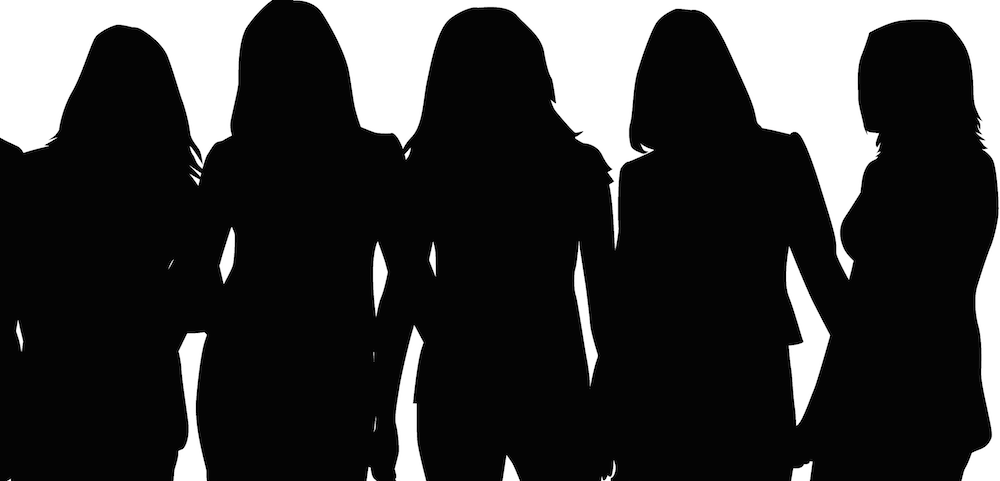Join us Dec. 1-3 in New Orleans for the Digiday Programmatic Marketing Summit
2016 Year in Preview: Holding companies make diversity their business

In this series, the 2016 Year in Preview, Digiday’s staff of reporters and editors is looking at the major trends of 2016. Download all 10 installments here.
Holding companies have for a long time buried diversity numbers in thick annual corporate social responsibility reports. That’s about to change: In 2016 expect diversity to come front and center as an industry priority.
A look at holding company’s diversity numbers — most of which are available in some shape or form publicly and were obtained by Digiday — shows that all four of the biggest companies have made diversity a key part of their business practices, and provide some encouraging hints at where the industry is heading.
Tech companies like Facebook and Twitter have cleared the path, making waves this year by consistently publishing gender and race breakdown — and not just as part of their annual filings. But agencies are now having their hands forced as well. And it’s due in large part to the clients.
“I am sick and tired as a client of sitting in agency meetings with a whole bunch of white straight males talking to me about how we are going to sell our brands that are bought 85 percent by women,” said Brad Jakeman, president global beverages at PepsiCo, speaking to 2,500 agencies and brands at the Association of National Advertisers’ annual meeting in Florida.
It’s not just Pepsi putting the screws to agencies. A few months ago, a U.S. agency said that a new client it was pitching had asked, as part of the request for proposal, how many women were part of the creative team. Today, said Heide Gardner, chief of diversity at IPG, that’s not a one-off. It’s a growing trend, as is the call for supplier diversity, the number of vendors the agencies work with that are veteran-owned, for example, or LGBT-owned.
Kat Gordon, founder of the 3% Conference, recently launched a certification program and got consumer brands to pledge they only wanted to invite agencies that were 3% certified — which meant their creative departments had equal representation of men and women. The certification is still in its early stages, but Gordon is hopeful: “Clients are a key accelerant to diversifying agencies,” she said. “They pay the bill.”
And transparency around metrics is key. “Without metrics, you can’t improve. The thing that prevents agencies or holding companies from doing this already, which is fear of being exposed as missing the mark, fails to realize something important,” said Gordon. “No one has solved this yet.”
And the impetus to solve it is strong. Here are a few current numbers that reflect the state of diversity in the industry, crunched by the New York City office of the Comptroller.
“Racial disparity is 38 percent worse in the advertising industry than in the overall U.S. labor market.”
“Black college graduates working in advertising earn 80 cents for every dollar earned by their equally-qualified White counterparts.”
“About 16 percent of large ad firms employ no black managers or professionals.”
In 2011, 2012 and again in 2013, New York City’s office of the Comptroller asked the U.S. holding companies, IPG and Omnicom, to disclose EEO-1 data, which breaks down composition of race and gender into sub-categories, including in management positions. New York City pensions funds, which have 35,000 companies in the portfolio, hold shares of the companies’ stock (worth more than $60 million), after all. And since the finance and advertising industries had pervasive issues with gender and race, investors have called for more transparency.
“As it turns out, most banks have been fairly responsive when it comes to public disclosure of workforce diversity data,” said Scott M. Stringer, New York City Comptroller. “Advertising firms, on the other hand, have been less forthcoming, and it makes one wonder if things have changed since the Mad Men days.” He added that without meaningful, quantitative data on workplace diversity, it’s impossible to evaluate a company’s performance over time or relative to its peers.
IPG, responding in 2012, declined to play nice. “The Board does not believe adoption of this proposal to publicly disclose our EEO-1 reports would enhance its commitment to an environment of diversity and inclusion in any meaningful way, and in fact, could negatively impact our competitive position in the marketplace, particularly given that we are in an industry in which talent is our primary and most valuable asset.” It wasn’t asked again.

Interpublic Group
IPG voted not to disclose the exact data the Comptroller’s office was asking for, but it does release top-line EEO-1 data every year.
In its most recent disclosures, IPG’s showed that 54 percent of the company’s managers, including executive, senior and mid-level management, are women.
Women make up 30 percent of executive and management positions in creative departments across IPG, well above the reported industry norm of 11 percent. IPG also reported that multicultural employees make up 19 percent of managers, compared to 20 percent for the overall U.S. workforce.
“We feel positive about the progress. But we’re not satisfied.” said Gardner, the company’s chief diversity officer. Next year: her priority is to implement a system that will hold leadership at every operating unit accountable for diversity targets. “We are not in reactionary mode, we are ahead of the curve. But this is a long haul.”
“We want IPG to be the industry’s most inclusive company because we understand that a dynamic and diverse company is better able to serve global clients,” said Michael Roth in a report from the 2020 Women on Boards, an initiative dedicated to increasing the percentage of women on corporate boards to 20percent by 2020.
At IPG, 44 percent of board seats were held by women in 2013 — four out of nine.
Omnicom
The comptroller has has asked Omnicon to disclose its data every year, most recently on December 9, when the office sent a new resolution to Omnicom asking again for it to disclose detailed diversity data.
Every time the company has been asked, the board has voted not to disclose EEO-1 data, saying that it already publishes similar statistics on its website. The board said that EEO-1 data is not informative or a reliable measure since it yields generalized, not specific data. “We do not believe that disclosing it will meaningfully further the goal of workplace diversity,” the board said last time.
The issue is that the exact data the Comptroller is asking for is somewhat different from what the companies are disclosing publicly: the companies that have decided not to disclose that data have said repeatedly that disclosing detailed data would put them at a competitive disadvantage, especially since talent is the key resource in the marketing communications industries.
According to the data Omnicom does disclose, women make up 54 percent of U.S. managers in 2015. Multicultural professionals make up 18 percent of managers. And overall, 28 percent of Omnicom’s talent base is multicultural. Much of that is to the credit of Tiffany R. Warren, who has been doing diversity and inclusion work for the company for six years as its chief diversity officer. Warren said this has been “a great year” for diversity both in commercials and in the industry. She said her priority is to solve the issue as an industry, something she says the technology world actually doesn’t do.
The chief diversity officers at Omnicom network agencies all meet regularly to figure out new ways to fill the talent pipeline with young, multicultural talent. “We’re competing with tech, we’re competing with everyone,” said Warren. “We have to represent the best of what Omnicom has to offer.”
WPP
At WPP, the company discloses data in its annual report and in Atticus, its annual journal. About 26 percent of employees in the U.S. and U.K. are ethnic minorities, up from 25 percent in 2013.
“We aim to achieve balanced representation of men and women at all levels of the organization,” the company wrote in its latest sustainability report. The goal for WPP is to increase the female representation on the board of directors to 30 percent of non-executive directors. It is currently 24 percent.
For Martin Sorrell, CEO, the focus is on making sure gender balance isn’t a “women’s issue” at the agency. The executive points to research showing how businesses with balanced leadership outperform others. “And with women accounting for 60 percent of university graduates and responsible for 80 percent of purchasing decisions, this is an issue of access to talent and access to markets too.”
But: he said that if they plod along the way they have been, they will not achieve the balance necessary for years to come. The company is now focusing on flex working arrangements and has launched WPP Stella, a network for senior women in the group.
Publicis
The percentage of women sitting on the management committees in the networks has fallen to 26 percent (from 32 percent in 2013). The percentage of women management committees in the agencies is unchanged at 39 percent (also 39 percent in 2013).
“Clearly, given the Groupe’s expansion and the way our businesses are evolving, the diversity of our people – in every sense of the term – is an absolute necessity,” CEO Maurice Levy wrote in the company’s CSR report, which publishes the diversity numbers.
Did you enjoy this essay? There are nine more just like it as part of Digiday’s Year in Preview series. The full series is available for download in one PDF – sign up here to get your copy.
More in Marketing

The chance to win the holiday marketing season has already come and gone, per Traackr’s holiday report
The influencer marketing platform tracked the top brands according to VIT, Traackr’s proprietary metric for visibility, impact and trust.

The EU’s Digital Omnibus offers relief for ad tech, but hands more power to Big Tech and AI agents
What it means for GDPR, ad tech and the online media industry as a whole.

Future of Marketing Briefing: Bold call – the legacy influencer agency doesn’t fit the new market
The influencer shops that once drew investor enthusiasm are now ceding ground to tools that promise scale, predictability and a cleaner margin story.





